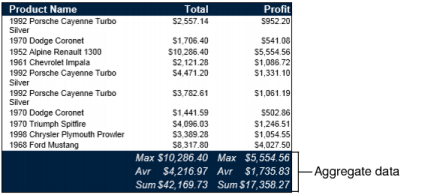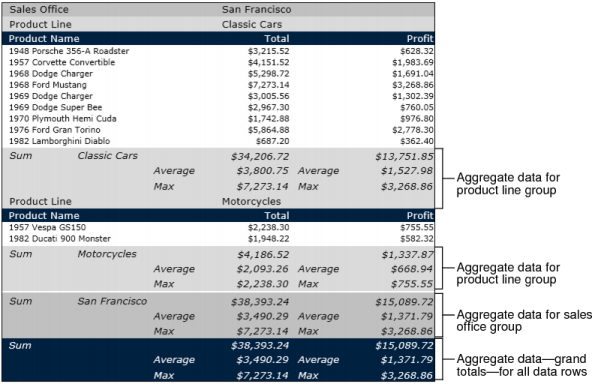Aggregating data involves performing a calculation on a set of values. For a simple listing report that does not organize data in groups or sections, aggregate calculations are performed on values in a selected column, over all the data rows in a table. The listing report design in Figure 4-22 displays aggregate data for the Total and the Profit columns at the end, or footer, of the table.
For a report design that organizes data in groups or sections, as shown in Figure 4-23, you can display aggregate information for a selected column or columns, for each group of data rows, and for all the data rows in the table. In this report design, the aggregate data appears in the footer of each group and in the footer of the table.
|
|
The type of aggregate calculation. For both the Total and Profit columns, the report design in Figure 4-23 displays the sum of the values, the highest (max) value, and the average value. For each column, you can display a maximum of three aggregations. Each aggregation appears on a separate row.
|


